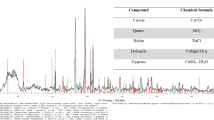Abstract
Isolate A-3 from Antarctic soil in Casey Station, Wilkes Land, was characterized for growth on hydrocarbons. Use of glucose or kerosene as a sole carbon source in the culture medium favoured biosynthesis of surfactant which, by thin-layer chromatography, indicated the formation of a rhamnose-containing glycolipid. This compound lowered the surface tension at the air/water interface to 27 mN/m as well as inhibited the growth of B. subtilis ATCC 6633 and exhibited hemolytic activity. A highly hydrophobic surface of the cells suggests that uptake occurs via a direct cell–hydrocarbon substrate contact. Strain A-3 is Gram-positive, halotolerant, catalase positive, urease negative and has rod–coccus shape. Its cell walls contained meso-diaminopimelic acid. Phylogenetic analysis based on comparative analysis of 16S rRNA gene sequences revealed that strain A-3 is closely related to Rhodococcus fascians with which it shares 100% sequence similarity. This is the first report on rhamnose-containing biosurfactant production by Rhodococcus fascians isolated from Antarctic soil.



Similar content being viewed by others
References
Aislabie JM, Balks MR, Foght JM, Waterhouse EJ (2004) Hydrocarbon spills on Antarctic soils: effects and management. Environ Sci Technol 38:1265–1274
Beal R, Betts WB (2000) Role of rhamnolipid biosurfactants in the uptake and mineralization of hexadecane in Pseudomonas aeruginosa. J Appl Microbiol 89:158–168
Bej AK, Saul D, Aislabie J (2000) Cold-tolerant alkane-degrading Rhodococcus species from Antarctica. Polar Biol 23:100–105
Benincasa M, Abalos A, Oliveira I, Manresa A (2004) Chemical structure, surface properties and biological activities of the biosurfactant produced by Pseudomonas aeruginosa LBI from soapstock. Antonie Van Leeuwenhoek 85:1–8
Berd D (1973) Laboratory identification of clinically important aerobic actinomycetes. Appl Microbiol 25:665–681
Bodour AA, Maier RM (2002) Biosurfactants: types, screening methods, and applications. In: Bitton G (ed) Encyclopedia of environmental microbiology, 1st edn. Wiley, Hoboken, New Jersey, pp 750–770
Bushnell ID, Hass HE (1941) Utilization of certain hydrocarbon by microorganisms. J Bacteriol 41:653–658
Cirigliano MC, Carman GM (1984) Isolation of a bioemulsifier from Candida lipolytica. Appl Environ Microbiol 48:747–750
Espuny MJ, Egido S, Mercade ME, Manressa A (1995) Characterization of trehalose tetraester produced by a waste lubricant oil degrader Rhodococcus sp. Environ Toxicol Chem 48:83–88
Finnerty WR (1992) The biology and genetics of the genus Rhodococcus. Annu Rev Microbiol 46:193–218
Holt JG, Krieg NR, Sneath PHA, Staley JT, Williams ST (eds) (1994) Bergey’s manual of determinative bacteriology. Williams & Wilkins, Baltimore
Jie L, Guo-Zhen Z, Hua-Hong C, Sheng Q, Li-Hua X, Cheng-Li J, Wen-Jun L (2008) Rhodococcus cercidiphylli sp. nov., a new endophytic actinobacterium isolated from a Cercidiphyllum japonicum leaf. Syst Appl Microbiol 31:108–113
Kim JS, Powalla M, Zang S, Wagner F, Zunsdorf H, Wray V (1990) Microbial glycolipids production under nitrogen limitation and resting cell conditions. J Biotechnol 13:257–266
Klatte S, Johnke KD, Kroppenstedt RM, Rainey FA, Stackebrandt E (1994) Rhodocoocus luteus is a latter subjective synonym of Rhodoccocus fascians. Int J Syst Bacteriol 44:627–630
Koch AK, Kappeli O, Fiechter A, Reiser J (1991) Hydrocarbon assimilation and biosurfactant production in Pseudomonas aeruginosa mutants. J Bacteriol 173:4212–4219
Lang S, Philp JC (1998) Surface-active lipids in rhodococci. Antonie Van Leeuwenhoek 74:59–70
Lang S, Wullbtandt D (1999) Rhamnose lipids—biosynthesis, microbial production and application potential. Appl Microbiol Biotechnol 51:22–32
Makkar RS, Cameotra SS (2002) An update on the use of unconventional substrates for biosurfactant production and their new applications. Appl Microbiol Biotechnol 58:428–434
Nichols DS, Bowman J, Sanderson K, Nichols CM, Lewis T, McMeekin T, Nichols PD (1999) Developments with Antarctic microorganisms: culture collections, bioactivity screening, taxonomy, PUFA production and cold adapted enzymes. Curr Opin Biotechnol 10:240–246
Peng F, Liu Z, Wang L, Shao Z (2007) An oil degrading bacterium: Rhodoccocus erythropolis strain 3C–9 and its biosurfactants. J Appl Microbiol 102:1603–1611
Rainey FA, Ward-Rainey N, Kroppenstedt RM, Stackebrandt E (1996) The genus Norcardiopsis represents a phylogenetically coherent taxon and a distinct actinomycete lineage: proposal of Nocardiopsaceae fam. nov. Int J Syst Bacteriol 46:1088–1092
Rosenberg M, Gutnick D, Rosenberg E (1980) Adherence of bacteria to hydrocarbons: a simple method for measuring cell surface hydrophobicity. FEMS Microbiol Lett 9:29–33
Ruberto LAM, Vazquez S, Lobaldo A, MacCormack WP (2005) Psychrotolerant hydrocarbon-degrading Rhodococcus strains isolated from polluted antarctic soils. Antarct Sci 17:47–56
Russell NJ (1998) Molecular adaptations in psychrophilic bacteria: potential for biotechnological applications. Adv Biochem Eng Biotechnol 61:1–21
Siegmund I, Wagner F (1991) New method for detecting rhamnolipids excreted by Pseudomonas species during growth on mineral agar. Biotechnol Tech 5:265–268
Sikkema J, de Bont JA, Poolman B (1995) Mechanisms of membrane toxicity of hydrocarbons. Microbiol Rev 59:201–222
Snape I, Riddle MJ, Stark JS, Cole CM, King CK, Duquesne S, Gore DB (2001) Management and remediation of contaminated sites at Casey Station, Antarctica. Polar Record 37:199–214
Soberón-Chávez G, François Lépine F, Déziel E (2005) Production of rhamnolipids by Pseudomonas aeruginosa. Appl Microbiol Biotechnol 68:718–725
Stackebrandt E, Rainey FA, Ward-Rainey NZ (1997) Proposal for a new hierarchic classification system, Actinobacteria classis new. Int J Syst Bacteriol 47:479–491
Tuleva B, Christova N, Cohen R, Stoev G, Stoineva I (2008) Production and structural elucidation of trehalose tetraesters (biosurfactants) from a novel alkanothrophic Rhodococcus wratislaviensis strain. J Appl Microbiol 104:1703–1710
Vasileva-Tonkova E, Gesheva V (2004) Potential for biodegradation of hydrocarbons by microorganisms isolated from Antarctic soils. Z Naturforsch 59c:140–145
Vasileva-Tonkova E, Gesheva V (2005) Glycolipids produced by antarctic Nocardioides sp. during growth on n-paraffin. Process Biochem 40:2387–2391
Vasileva-Tonkova E, Gesheva V (2007) Biosurfactant production by antarctic facultative anaerobe Pantoea sp. during growth on hydrocarbons. Curr Microbiol 54:136–141
Whyte LG, Hawari J, Zhou E, Bourbonnierre L, Innis WE, Greer CW (1998) Biodegradation of variable-chain-length alkanes at low temperatures by a psychrotrophic Rhodococcus sp. Appl Environ Microbiol 64:2578–2584
Zhang J, Zhang C, Xiao C, Zin M, Goodfellow M (2002) Rhodococcus maanshanensis sp.nov., a novel actinomycete from soil. Int J Syst Evol Microbiol 52:2121–2126
Author information
Authors and Affiliations
Corresponding author
Rights and permissions
About this article
Cite this article
Gesheva, V., Stackebrandt, E. & Vasileva-Tonkova, E. Biosurfactant Production by Halotolerant Rhodococcus fascians from Casey Station, Wilkes Land, Antarctica. Curr Microbiol 61, 112–117 (2010). https://doi.org/10.1007/s00284-010-9584-7
Received:
Accepted:
Published:
Issue Date:
DOI: https://doi.org/10.1007/s00284-010-9584-7




